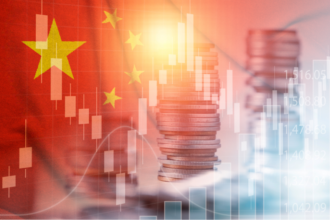Officially starting in Switzerland, the US-China trade negotiations represent a crucial step toward bringing equilibrium back into global commerce. Since the beginning of the year, this conversation marks the first significant diplomatic interaction between Washington and Beijing. It is generally agreed that this is a vital first step toward settling a nasty trade spat influencing world trade.
Top officials from both countries are meeting from May 9 to May 12 to go over strategies to lower tariff tensions and rebuild solid economic relations. Leading the Chinese team is Chinese Vice Premier He Lifeng; US Trade Representative Jamieson Greer and US Treasury Secretary Scott Bessent are speaking for the American side.
Following months of growing tensions and both countries levying harsh tariffs on one another’s products, this high-level involvement comes after watching these gatherings attentively, the globe hopes they will open a road of compromise, cooperation, and long-term economic stability.
Why Right Now the US-China Trade Talks Matter
Particularly with China, the comeback of President Donald Trump to the White House sparked trade conflicts once more. His government recently levied fresh import duties on Chinese products, some of which top 145%. Beijing reacted fast with countermeasures, imposing tariffs on some American goods up to 125%.
These increases caused significant disturbance to world trade. Investor confidence wavers, supply networks were strained, and international markets showed instability. Thus, timing of the US-China trade negotiations is quite important.
Emphasizing the value of these conversations, Scott Bessent said, “This will be about de-escalation, not the major trade deal. Still, we have to defuse before we can proceed. Emphasizing the need to create a basis before looking for more general accords, his comment shows a realistic attitude to re-engagement.
China's stance: eager to discuss, strict on values
China has consented to participate in the negotiations, but its government makes it abundantly evident that it expects the US to own its unilateral trade policies. “If the United States wants to resolve the issue through negotiations, it must face up to the serious negative impact of unilateral tariff measures on itself and the world,” a Chinese commerce ministry spokesman said.
Chinese official media claims that there were several reasons for the choice to take part in US-China trade negotiations. These included national economic interests, worldwide expectations, and rising demands for a response from American companies.
China has showed openness to negotiations, but its message is clear: if needed, it will keep reacting aggressively to any apparent economic aggression. “If the nation decides to continue to fight this trade war, it will fight to the end,” the paper said.
Expert Analysis: Hopeful but Realistic Outlook:
Regarding the result of these first negotiations, trade policy analysts all around are rather hopeful but also wary. Many think that although at this point a breakthrough deal is doubtful, the simple act of gathering around the table is a positive step.
“You have to start somewhere,” one international commerce consultant advised. Though it’s a necessary first step, it’s not likely the breakthrough event many dream about.
Others think the procedure might reflect the protracted negotiations of 2018, which lasted months and comprised several rounds of back-and-forth prior to even meager agreements being made.
Legal researcher Henry Gao, who specializes in international trade, said, “We could expect the negotiations to stretch on for several months or maybe more than a year. Here there are ingrained problems that will not be fixed over night. Read another article on US-China Trade War
Still, starting the US-China trade talks has given a shot of hope to a strained world economy.
Investor Reactions: Markets Show Hope
Financial markets in China and the US both saw increases after the US-China trade talks were announced. As investors embraced the fresh diplomatic push, Mainland Chinese and Hong Kong stock indices surged. Measures of domestic economic stimulus implemented by Chinese officials helped to validate these increases.
Stock futures in the United States, meanwhile, rose in response to the encouraging news. Futures are forward contracts reflecting investor expectations of market behavior once it opens. Usually reflecting general confidence in the direction of economic policy or international relations, a positive future seems ahead.
Although the negotiations by themselves won’t instantly solve economic problems, market analysts believe they will help companies engaged in cross-border trade to relax volatility and enable more long-term planning.
On the table for the US-China Trade Talks is what?
Although exact elements of the negotiation agenda are still private, several important issues are probably under discussion:
- Tariffs lowered or changed for strategic items
- Protection of intellectual property
- Regulations for technology transfer
- Exchange methods of currencies
- Penetration of home markets
By addressing these fundamental issues, the US-China trade negotiations could finally produce a more balanced trade relationship, though such outcomes will almost certainly need months of detailed work and follow-up meetings.
Significantly, both sides have to negotiate political constraints at home in addition to financial ones. Both countries’ domestic constituencies are closely observing, thus any apparent compromise could be politically dangerous.
Future Directions: A Long but Essential Journey
Although nobody expects these negotiations to produce an all-encompassing trade agreement right away, they provide a basis for rebuilding confidence and creating communication rules. Should these discussions go well, more frequent and regimented contacts in the not-too-distant future could be made possible.
Not only for bilateral trade but also for the health of worldwide supply chains, manufacturing, and digital services, a stable relationship between the United States and China is vital given many of the world’s economies are highly linked.
The US-China trade negotiations redefine how two big countries coexist and cooperate in a sophisticated worldwide economy, not only about tariffs.
In essence, communication over disturbance
The US-China trade negotiations mark a change from antagonism toward constructive involvement. Although both sides are not ready to compromise on fundamental concerns, the act of re-opening communication is a necessary advance.
This fresh communication gives governments, companies, and investors all around a cautious hope. Though it starts with communication, de-escalation cannot happen overnight.
One thing is certain: open communication is still the most effective instrument for settling international economic conflicts as the globe tightly watches the advancements in Switzerland.








